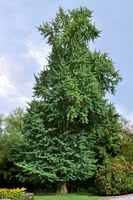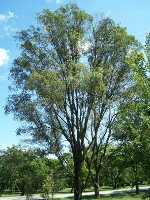Mon-Fri 9am - 5pm Mountain time
Ginkgo Biloba vs Siberian Elm
Ginkgo biloba
Ulmus pumila
NOT AVAILABLE THIS SEASON - MIGHT RETURN
PRODUCTION CANCELLED
The Ginkgo Biloba is regarded as one of the most distinctive and beautiful of all the deciduous trees, and has remained genetically unchanged for millions of years. Its beautifully fan-shaped leaves develop a clear yellow colour in fall. Graceful and attractive year-round, Ginkgo is the perfect conversation starter in your yard.
Siberian Elm is a small to medium-sized deciduous tree. It has a similar form to American Elm, but smaller, with a more pyramidal habit and shorter lifespan. It is also more resistant to Dutch Elm disease and is very salt tolerant.
Siberian Elm was grown as shelterbelts in the prairies after the Dustbowl disasters, where its rapid growth and tolerance for drought and cold initially made it a great success. It is an excellent shade tree.
Note: Due to it's increasingly controversial reputation for being invasive in warmer climates, we are no longer planning to grow this species for retail purchase on a regular basis.
Ginkgo Biloba Quick Facts
Siberian Elm Quick Facts
Toxicity: Uncooked nuts in large quantities
In row spacing: 2.4 - 3 m (8 - 10 ft)

